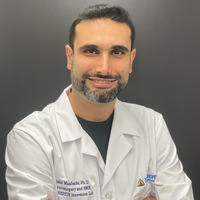Papers by Nancy Goldstein
Journal of Clinical Nursing
Summary: A trauma-informed, multidisciplinary team (MDT) approach has shown improved outcomes for... more Summary: A trauma-informed, multidisciplinary team (MDT) approach has shown improved outcomes for childbearing individuals with opioid use disorder (OUD) and their neonates. However, opioid agonist treatment (OAT) remains the first-line treatment option. Evidence-based practice should guide practitioners to utilize variety of interventions, particularly during this vulnerable and medically resource intensive time. Content Outline: I. Background A. US opioid addition epidemic B. Morbidity and mortality rates for childbearing individual and fetus C. Birth outcomes 1. Preterm birth 2. Complications 3. Treatment for childbearing individuals with OUD D. Trauma-informed care framework 1. Multidisciplinary treatment 2. Dartmouth-Hitchcock Medical Center’s Perinatal Addiction Treatment Program
Nu Beta is a chartered chapter of Sigma Theta Tau International Honor Society of Nursing, and was... more Nu Beta is a chartered chapter of Sigma Theta Tau International Honor Society of Nursing, and was established at Johns Hopkins School of Nursing (JHSON) in 1992. The purposes of Sigma Theta Tau are to recognize superior achievement and the development of leadership capabilities, foster high professional standards, encourage creative work, and strengthen commitment to the ideals and purposes of the profession of nursing.
Introduction In 2012, Truvada, the medication used for Pre-exposure Prophylaxis (PrEP), was appro... more Introduction In 2012, Truvada, the medication used for Pre-exposure Prophylaxis (PrEP), was approved by the Food and Drug Administration (FDA) for use in the prevention of the sexual transmission of Human Immunodeficiency Virus (HIV). It has been shown to also be effective for HIV prevention among persons who inject drugs (PWID) and others with Substance Use Disorders (SUD); however, there is currently little research in the area of PrEP use amongst people with SUD, especially when looking outside of men who have sex with men (MSM) (Goldstein, Carter-Davis & Seymour, 2018).

Journal of Nursing Scholarship, Dec 30, 2022
Purpose: COVID-19 and other recent infectious disease outbreaks have highlighted the urgency of r... more Purpose: COVID-19 and other recent infectious disease outbreaks have highlighted the urgency of robust, resilient health systems. We may now have the opportunity to reform the flawed health care system that made COVID-19 far more damaging in the United States (U.S.) than necessary. Design and Methods: Guided by the World Health Organization (WHO) Health System Building Blocks framework (WHO, 2007) and the socio-ecological model (e.g., McLeroy et al., 1988), we identified challenges in and strengths of the U.S.' handling of the pandemic, lessons learned, and policy implications for more resilient future health care delivery in the U.S. Using the aforementioned frameworks, we identified crucial, intertwined domains that have influenced and been influenced by health care delivery in the U.S. during the COVID-19 pandemic through a review and analysis of the COVID-19 literature and the collective expertise of a panel of research and clinical experts. An iterative process using a modified Delphi technique was used to reach consensus. Findings: Four critically important, interrelated domains needing improvement individually, interpersonally, within communities, and for critical public policy reform were identified: Social determinants of health, mental health, communication, and the nursing workforce. Conclusions: The four domains identified in this analysis demonstrate the challenges generated or intensified by the COVID-19 pandemic, their dynamic interconnectedness, and the critical importance of health equity to resilient health systems, an effective pandemic response, and better health for all.

Journal of Nursing Education and Practice, 2021
Background: An increased incidence of chronic pain is growing worldwide. Typical treatment of chr... more Background: An increased incidence of chronic pain is growing worldwide. Typical treatment of chronic pain often involves a medication regimen. Opioids are the most highly prescribed class of medications for chronic pain by providers. The liberal use of opioids to help relieve chronic pain has led to other undesirable effects such as addiction, morbidity and mortality.Methods: A literature search was conducted using the key search concepts: pain AND physical therapy AND substance use. Results: A total of 5 articles met inclusion criteria out of 331 articles considered.Conclusions: The focus on alternative approaches to treatment of chronic pain/back pain for the SUD population is limited in the literature. Training for non-pharmacological options is needed for the NP and other practitioners to treat chronic back pain in the SUD population.
Journal of Addictions Nursing, 2021
ABSTRACT Telemedicine has been effective at bridging the gap between patients, providers, and hea... more ABSTRACT Telemedicine has been effective at bridging the gap between patients, providers, and health systems. As part of a large, academic medical center in Baltimore, MD, it has been found that using digital tools, particularly when access to care is otherwise limited, is beneficial to supporting recovery. However, there are barriers to telemedicine surrounding patient privacy and increased tendency of patients to avoid treatment. Maintaining personalized, evidence-based clinical care while limiting the spread of CoVID-19 has required swift adaptation from healthcare providers. The intent of this article is to discuss provider perspectives of benefits and barriers to telemedicine for substance use disorder treatment during the CoVID-19 pandemic.

The Journal for Nurse Practitioners, 2021
Telemedicine has been effective at bridging the gap among patients, providers, and health systems... more Telemedicine has been effective at bridging the gap among patients, providers, and health systems. Authors from a large academic medical center in Baltimore, MD, anecdotally found that digital tools were beneficial in supporting substance use disorder recovery during a global pandemic. Audiovisual tools like Zoom (Zoom Video Communications, Inc, San Jose, CA) and Doximity (Doximity, Inc, San Francisco, CA), as well as increased frequency of communication with patients, have been most helpful to supporting recovery. The barriers noted were related to patient privacy and increased tendency of patients to avoid treatment, similar barriers as when treatment is provided in the clinic. The intent of this narrative is to discuss provider perspectives of benefits and barriers to telemedicine for substance use disorder treatment during the coronavirus disease 2019 pandemic.
The Journal for Nurse Practitioners
In 2017, a low-resource substance use treatment center in Baltimore, Maryland, noted that at leas... more In 2017, a low-resource substance use treatment center in Baltimore, Maryland, noted that at least 38% of patients, ranging from 18 to 76 years old, with substance use disorders (SUD) met the criteria for preexposure prophylaxis (PrEP) therapy. PrEP therapy consists of a daily medication to prevent transmission of human immunodeficiency virus. A conceptual framework model was developed linking eligible patients with SUD to PrEP services based on current Centers for Disease Control and Prevention PrEP recommendations. Three tools were developed for PrEP service planning, implementation, and evaluation. The focus of this report is to increase access to and uptake of comprehensive PrEP services in those with SUD who are at risk for acquiring human immunodeficiency virus.

JOJ Nursing & Health Care
Background: Adolescence is a challenging phase of human development. Characteristics of both the ... more Background: Adolescence is a challenging phase of human development. Characteristics of both the adolescent and environment influence response to life events. Pregnancy is a stressful life event. The pregnant adolescent with substance use disorder (SUD) is not well served by healthcare providers who do not understand the convergence of all three states: adolescence, pregnancy, and SUD. Objective: Describe a resilience model used as a framework for adaptation in adolescent populations under significant stress during pregnancy and SUDs. Methods: The authors searched Pub Med, merging the terms "teenage pregnancy", "substance use", and "outcomes". Most addressed risk factors for the pregnant adolescent and fetus in the context of SUD; one addressed behavioral resilience of offspring after intrauterine exposure. This led to a search of resilience theory to find an applicable model in caring for adolescents who may be at risk, pregnant, or may have SUD. Results: A total of 32 articles were retrieved with 16 matching the criteria search. Resilience involves the ability to grow or adapt to life circumstances. New life circumstances disrupt homeostasis, and require energy to adapt and reintegrate. Interpersonal growth occurs when a person successfully resolves a disruption, but there are more disruptions during adolescence. The newness of these disruptions, with less coping skills and experience, makes adolescence more difficult. Conclusion: Richardson's model provides a useful, holistic approach to this problem. Fostering resilience involves personal appraisal and improving protective factors for this at-risk population.
Journal of Alcoholism & Drug Dependence
Early Diagnosis and Treatment of Cancer Series: Breast Cancer, 2011

Psycho-Oncology, 2013
Background: This study aims to examine the effectiveness of a self-management multimodal comprehe... more Background: This study aims to examine the effectiveness of a self-management multimodal comprehensive coping strategy program (CCSP) on quality of life (QOL) among breast cancer patients 1 year after treatment. Methods: Patients (n = 110) with stage II, III, or IV breast cancer scheduled to receive high dose chemotherapy and autologous hematopoietic stem cell transplantation were randomized to either CCSP treatment or control group. The CCSP intervention was taught 2 week before hospital admission with reinforcement at specified times during treatment and 3 months after discharge. The CCSP components included educational information, cognitive restructuring, coping skills enhancement, and relaxation with guided imagery. Instruments administered at baseline included the following: Quality of Life Index-Cancer Version (QOLI-CV), State-Trait Anxiety Inventory, Beck Depression Inventory, and Coping Strategies Questionnaire. At 1-year follow-up, patients (n = 73) completed and returned the follow-up QOLI-CV. Results: Patients were mainly ≥40 years of age, married, Caucasian, and diagnosed with advanced breast cancer. A model measuring effectiveness of CCSP on QOL (total and subscale) at 1-year follow-up showed that the CCSP group (n = 38) had significant improvement in overall QOL (p < 0.01), health and functioning (p < 0.05), and socioeconomic (p < 0.05) and psychological/spiritual well-being (p < 0.01) compared with the control group (n = 35). The CCSP patients frequently used the CCSP to manage psychological (51%) and sleep problems (60%). Conclusions: The CCSP improved QOL for patients at 1-year follow-up. Patients overwhelmingly reported that CCSP was beneficial. The CCSP as an effective coping intervention has potential as a self-management program for breast cancer survivors.
The Journal for Nurse Practitioners, 2015
ABSTRACT











Uploads
Papers by Nancy Goldstein